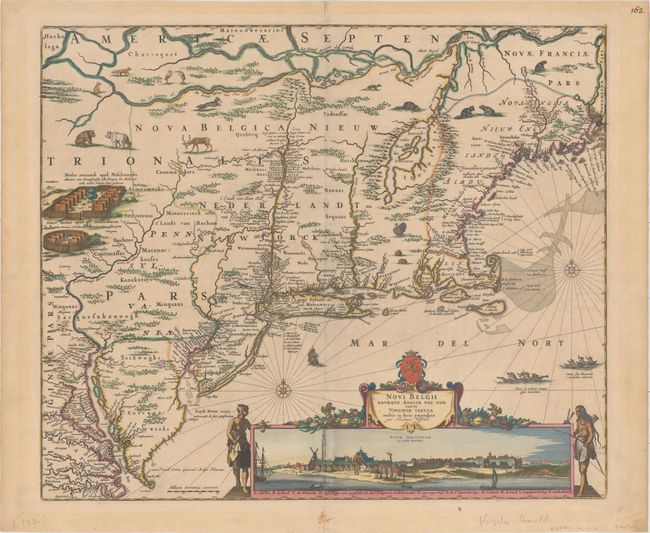Catalog Archive


Auction 159, Lot 172
Visscher's Influential Map with Early View of New York City
"Novi Belgii Novaeque Angliae nec non Partis Virginiae Tabula Multis in Locis Emendata", Visscher, Nicolas

Subject: Colonial New England & Mid-Atlantic United States
Period: 1684 (circa)
Publication:
Color: Hand Color
Size:
21.9 x 18.4 inches
55.6 x 46.7 cm
Download High Resolution Image
(or just click on image to launch the Zoom viewer)
(or just click on image to launch the Zoom viewer)